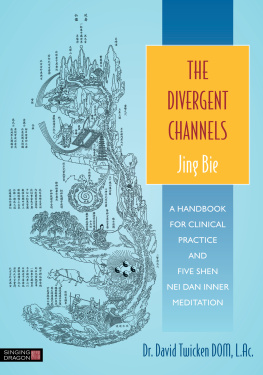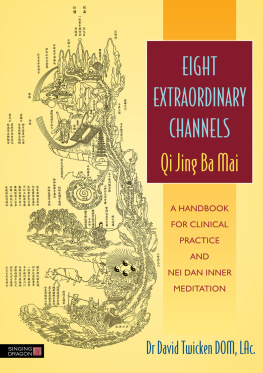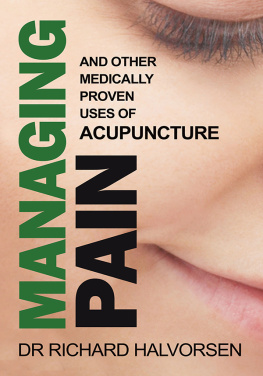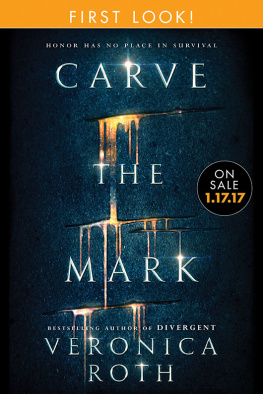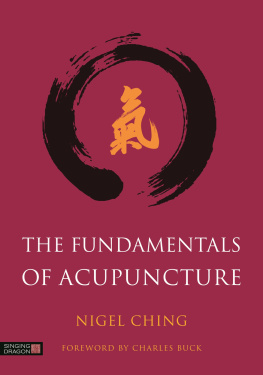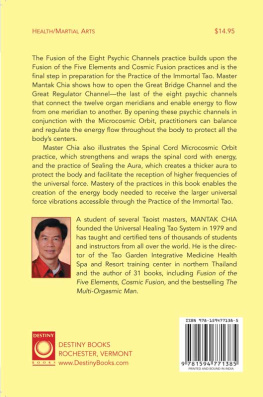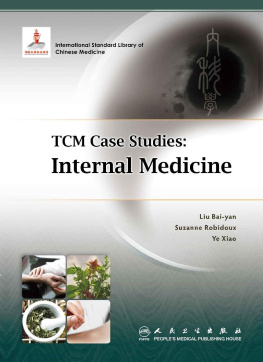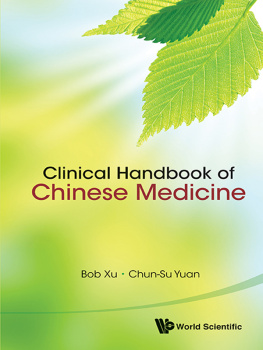ACKNOWLEDGMENTS
I would .
Thank you, Yitian Ni and Complementary Medicine Press, for the illustrations in .
Thank you, Jerry Alan Johnson, for the illustration in .
Thank you, Gregory E. Leblanc, L.Ac., Dr. Fritz Hudnut, DAOM, L.Ac., Jennifer Minor, Michael Winn, Steven Sy, and Marika Chandler, L.Ac., for your editing contributions.
Thank you, Jessica Kingsley and your excellent team at Singing Dragon, for all your work in publishing this book.
AUTHOR NOTE
The beauty of Chinese philosophy, metaphysics, and the healing arts is they are based on a unified view of life. Chinese medicine is applied philosophy. It is applying the insights of the ancient Chinese philosophers, astronomers, and shaman healers to the human body. Century after century, philosophical and practical knowledge accumulated based on trial and error, culminating in a sophisticated and profound natural healing system. I have attempted to retain the insight of the Han dynasty classics, the Su Wen and the Ling Shu , as the philosophical and clinical source for applying the divergent channels in practice. This book is based on three aspects of my experiences. The first is 30 years of studying Chinese philosophy, including Chinese metaphysics, I Ching , Chinese astrology, feng shui, qi men dun jia, nei dan, Qi Gong, and the Chinese calendar. The second is more than two decades of clinical experience. And the third is teaching theory and clinical applications to students and interns at Chinese medical schools.
There are five major acupuncture channels in the acupuncture system. They are the muscle, connecting, primary, separate (divergent), and the eight extraordinary channels. The divergent channels are unique in that they link or connect to all of the channel systems. A main goal of this book is to present Ling Shu and Su Wen theories and applications to show how the divergent channels can treat all the channels. There are a few translations of the words Jing Bie , some of which are separate channels, divergent channels, channel divergences, the distinct channels, and the reticular channels. From these I have chosen to use the names separate channels or divergent channels; I dont feel the translation influences the clinical applications. Learning theory and functions of the channels guide clinical applications.
This book is designed to present theories and clinical applications. There should be a seamless line between understanding and application. This understanding builds intention, and a fluidity of thought and action. Based on knowledge, application, and intention, we become not only technically proficient practitioners, but artists in the way we perceive and devise unique treatment plans for each patient. This is the essence of Chinese medicine.
This book is part of a series of books on Chinese medicine, and the life arts that contribute to understanding the foundation theories of the ancient healers, and how to apply their insights in modern life.
BIBLIOGRAPHY
Johnson, J.A. (2000) Chinese Medical Qi Gong Therapy . Pacific Grove, CA: International Institute of Medical Qi Gong.
Lu, H. (1985) A Complete Translation of The Yellow Emperors Classic of Internal Medicine and the Difficult Classic . Vancouver: Academy of Oriental Heritage.
Luk, C., and Yu, K.Y. (1999) Taoist Yoga: Alchemy and Immortality . San Francisco, CA: Red Wheel/Weiser.
Maciocia, G. (2006) The Channels of Acupuncture: Clinical Use of the Secondary Channels and the Eight Extraordinary Vessels . Oxford: Churchill Livingstone.
Ni, M. (1995) The Yellow Emperors Classic of Medicine: A New Translation of Neijing Suwen with Commentary. Boston, MA: Shambhala.
Ni, Y. (1996) Navigating the Channels of Traditional Chinese Medicine . San Diego, CA: Complementary Medicine Press.
Shima, M., and Chace, C. (2001) The Channel Divergences: Deeper Pathways of the Web . Boulder, CO: Blue Poppy Press.
Twicken, D. (2002) Treasures of Tao . Bloomington, IN: iUniverse.
Twicken, D. (2011) I Ching AcupunctureThe Balance Method: Clinical Applications of the Ba Gua and I Ching . London: Singing Dragon.
Twicken, D. (2013) Eight Extraordinary ChannelsQi Jing Ba Mai: A Handbook for Clinical Practice and Nei Dan Inner Meditation. London: Singing Dragon.
Van Nghi, T., Dzung, T., and Nguyen, C. (20052010) Huang Di Nei Jing, Ling Shu (three volumes). Sugar Grove, NC: Jung Tao School of Classic Chinese Medicine.
Veith, I. (1966) The Yellow Emperors Classic of Internal Medicine . Berkeley, CA: University of California Press.
Wang, Z., and Wang, J. (2007) Ling Shu Acupuncture . Irvine, CA: Ling Shu Press.
Wu, J. (2002) Ling Shu or The Spiritual Pivot . Hawaii: University of Hawaii Press.
Wu, N., and Wu, A. (2002) Yellow Emperors Canon of Internal Medicine . Beijing: China Science Technology Press.
Yang, C. (2004) A Systematic Classic of Acupuncture and Moxibustion . Boulder, CO: Blue Poppy Press.
by the same author
Eight Extraordinary ChannelsQi Jing Ba Mai
A Handbook for Clinical Practice and Nei Dan Inner Meditation
ISBN 978 1 84819 148 8
eISBN 978 0 85701 137 4
I Ching AcupunctureThe Balance Method
Clinical Applications of the Ba Gua and I Ching
ISBN 978 1 84819 074 0
eISBN 978 0 85701 064 3
of related interest
Heavenly Streams
Meridian Theory in Nei Gong
Damo Mitchell
Foreword by Rob Aspell
ISBN 978 1 84819 116 7
eISBN 978 0 85701 092 6
The Compleat Acupuncturist
A Guide to Constitutional and Conditional Pulse Diagnosis
Peter Eckman
Foreword by William Morris
ISBN 978 1 84819 198 3
eISBN 978 0 85701 152 7
Heavenly Stems and Earthly BranchesTianGan DiZhi
The Heart of Chinese Wisdom Traditions
Master Zhongxian Wu and Dr. Karin Taylor Wu
Foreword by Fei BingXun
ISBN 978 1 84819 151 8
eISBN 978 0 85701 158 9
CHINESE DYNASTIES
Dynasty | Years |
Pre-historic period |
Yangshao | 5000 BC |
Longshan | 2500 BC |
Xia | 21001600 BC |
Historic period |
Shang | 16001045 BC |
Zhou | 1045221 BC |
Western Zhou | 1045771 BC |
Eastern Zhou | 770256 BC |
Spring and Autumn Period | 722481 BC |
Warring States Period | 403221 BC |
Qin | 221206 BC |
Han | 206 BC AD 220 |
Western Han | 206 BC AD 24 |
Eastern Han | 25 AD AD 220 |
Three Kingdoms | 220280 |
Jin (Western and Eastern) | 265420 |
Southern and Northern | 420589 |
Sui | 581618 |
Tang | 618907 |
Five Dynasties and Ten Kingdoms | 907960 |
Song | 9601279 |
Liao | 9161125 |
Jin | 11151234 |
Yuan | 12711368 |
Ming | 13681644 |
Qing (Manchu) | 16441911 |
Republic of China | 19121949 |
Peoples Republic of China | 1949present |
CONCLUSION
The early .
The figures in are reprinted from Ni 1996 with kind permission from Yitian Ni and Complementary Medicine Press.
Next page
